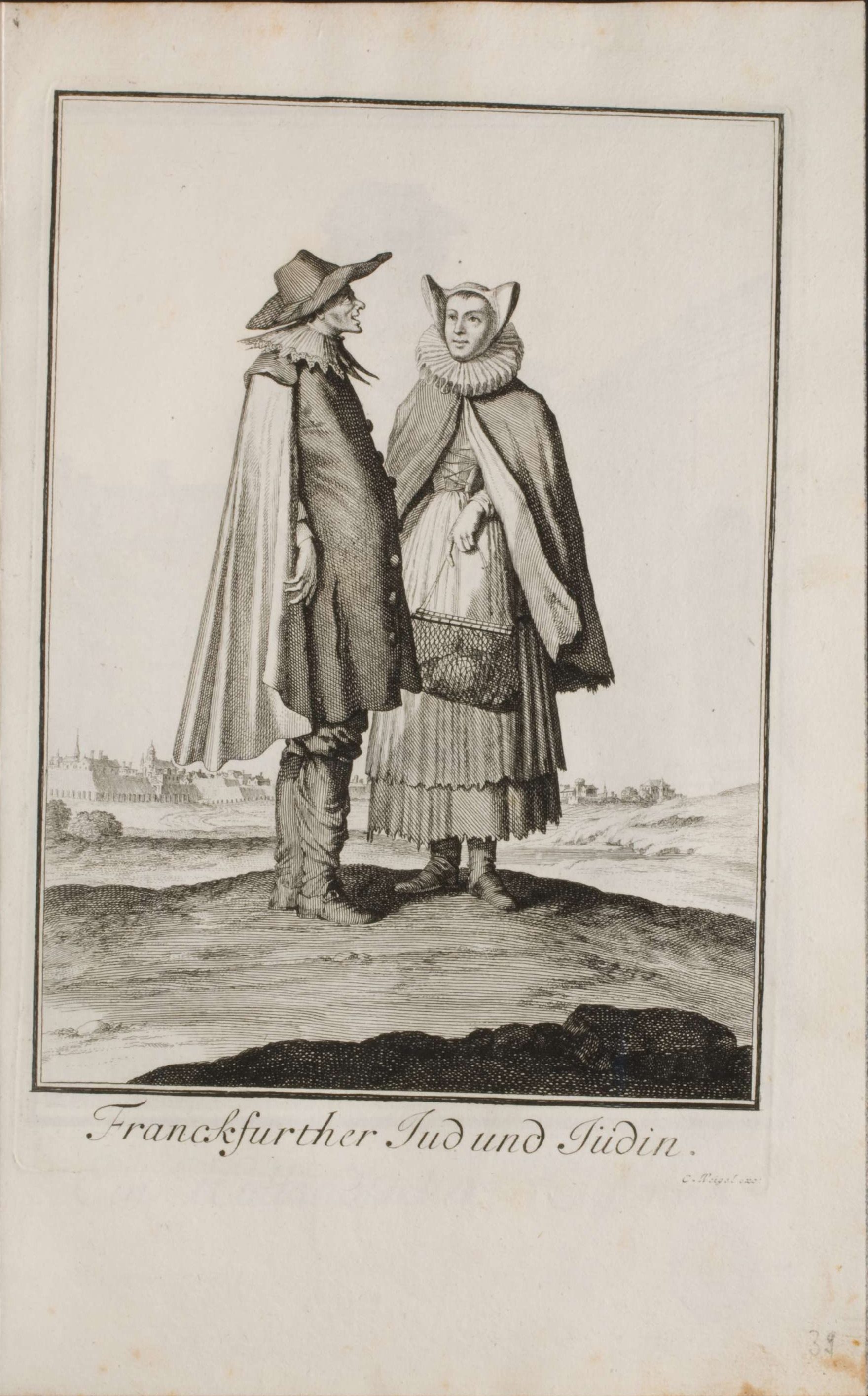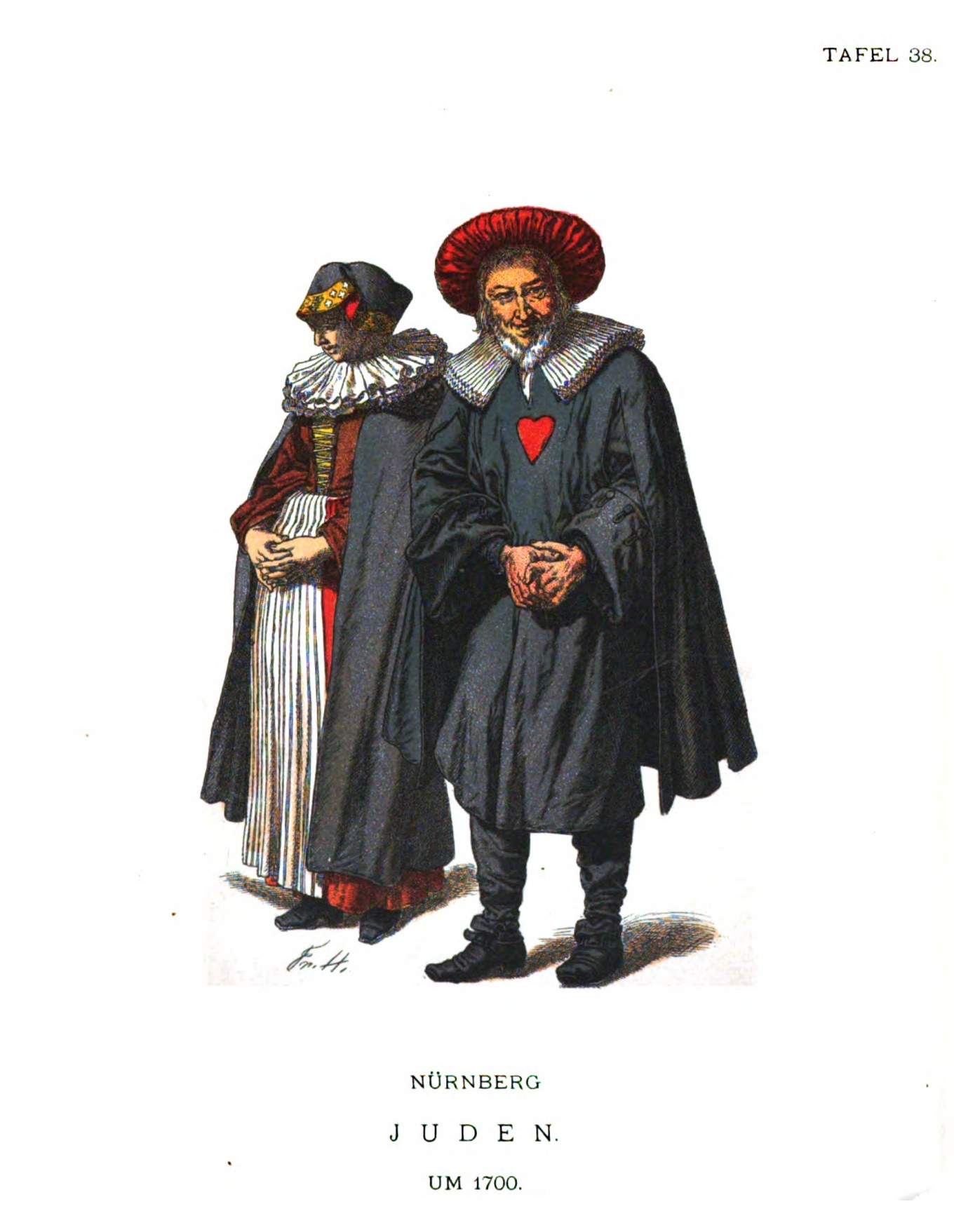Items of Jewish dress are among the most interesting objects when looking at material culture, though early modern clothes are usually not preserved as objects themselves. Clothes were stored within the home when not used, though for many Jewish men and women there was not much to store. Most certainly had a separate set of clothes for Shabbat and the holidays. Clothes were worn inside and outside of the home, thus, being an object constantly crossing this boundary. Dress played a crucial role in the display of belonging, the positioning of the self within the community and vis-à-vis the other. Thus, dress closely connects Jewish homes with the life outside - within the Jewish quarter or street and on the general market place and city or village streets of early modern Europe.
One of the sources commonly available to think about early modern Jewish dress are drawings and engravings (usually by non-Jewish artists) like the two displayed here. Presenting Jewish male and female dress from Nuremberg (or rather nearby Fürth as Nuremberg was closed to Jewish settlement) and Frankfurt am Main, both seem to provide a reliable depiction of early modern Jewish dress in the German lands. However, both only give a partial view. Like most drawings and engravings, they are depictions of ideal sets of dress, usually worn on Shabbat. Thus, they depict items such as the ruff or collar and the Shabbat cloak (shulmantel), which were not items of daily use. The Frankfurt couple included in the Neu-eröffnete Welt-Galleria of 1703 was a contemporary engraving (by Christoph Weigel), though we do not know who the model for the work was. By the late nineteenth century, Friedrich Hottenroth ventured into a three-volume project of depicting and describing German national costumes. He drew most of the depictions following older originals and descriptions. Interestingly, he mentions, that the woman’s large ruff was still common among Jews and non-Jews at the time. The red heart on the man’s costume, he states, was a specific local stigmatizing mark that Jews had to wear. However, we hardly know how he decided which clothes to depict and how to color them.
Which exhibit?
Page: Featured item
Short name for this entry
Between the Home and
Order on exhibit page
2
Turn off the details link on the exhibit page
On

